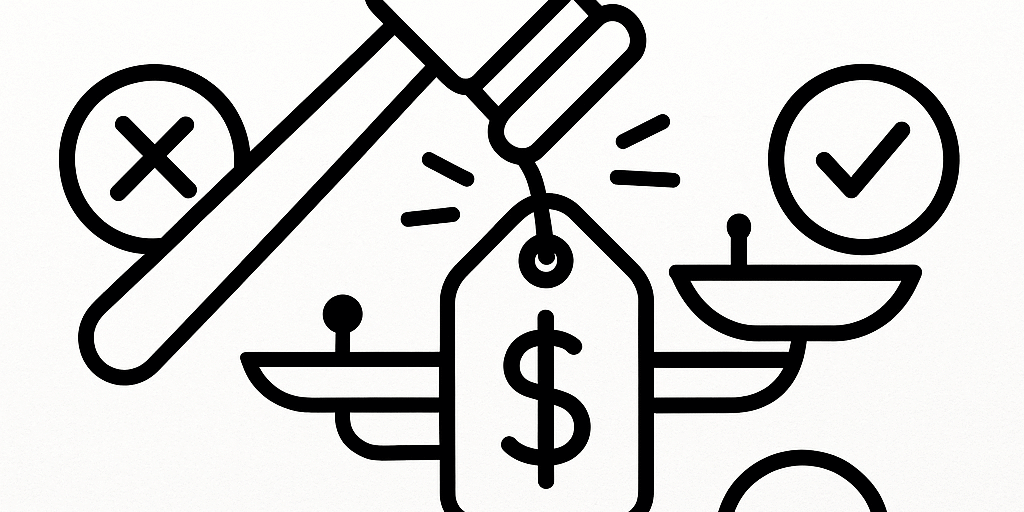Case studies of different reserve strategies and their outcomes
The reserve price decision can make or break your auction. Set it wrong, and you’ll either scare away bidders or watch valuable items sell for pennies.
After analyzing over 10,000 auction lots and interviewing dozens of successful operators, I’ve discovered that reserve strategy isn’t about the item—it’s about psychology. Here’s what the data reveals.
The Three Reserve Strategies That Actually Work
Strategy 1: The “Safety Net” Reserve (75-85% of estimated value)
When to Use: High-value items where the consigner needs certainty, or when you’re building credibility with new consigners.
Case Study – The $15,000 Lesson: Sarah, an operator in Ohio, had a consigner with a collection of vintage guitars. The crown jewel was a 1959 Gibson Les Paul Standard estimated at $45,000-$55,000. The consigner was nervous—it was his retirement fund.
Sarah’s Decision: Set reserve at $35,000 (about 75% of low estimate) The Psychology: Bidders knew the guitar had to be worth at least $35,000, so they felt confident bidding. The reserve was disclosed, creating urgency rather than suspicion. The Result: Final hammer price: $52,500
Why It Worked: The reserve was low enough that serious bidders felt comfortable, but high enough to protect the consigner’s downside. Sarah kept the consigner happy and built trust for future collections.
The Trap to Avoid: Setting reserves at 90%+ of estimate. This kills bidding energy because participants feel like they’re just helping you hit your number, not finding a deal.
Strategy 2: The “Transparent Gamble” (50-65% of estimated value)
When to Use: When you want maximum bidding participation and the consigner understands they’re trading safety for potentially higher returns.
Case Study – The Estate Sale Surprise: Mike in Tennessee was handling an estate with Depression-era glass. The family had no idea of values but wanted “whatever the market would bear.” Mike faced 47 pieces ranging from $50-$800 individual estimates.
Mike’s Decision: Set reserves at 50% of low estimates, but disclosed them in the catalog The Psychology: Bidders saw reasonable reserves and felt they could find deals. Multiple bidders stayed engaged throughout the sale. The Result:
- Items with reserves: 94% sold, averaging 128% of low estimate
- Similar items he’d run no-reserve the month before: 78% sold, averaging 89% of low estimate
Why It Worked: The disclosed reserves created a “fair deal” feeling. Bidders knew they wouldn’t steal anything, but they also wouldn’t overpay dramatically.
Strategy 3: The “No-Reserve Magnet” (Complete transparency)
When to Use: Building your bidder database, creating buzz, or when you have multiple similar items and can afford to sacrifice one for marketing.
Case Study – The Rolex Gamble: Janet in Florida inherited a collection of 12 vintage Rolex watches. Instead of putting reserves on all of them, she tried something different.
Janet’s Decision: Put 11 watches with reasonable reserves, but marketed one 1970 Submariner (estimated $8,000-$12,000) as “ABSOLUTE NO RESERVE.” The Psychology: The no-reserve Rolex drew massive attention. Her email list grew by 340 people in the week leading up to the sale. The Result:
- No-reserve Submariner: Sold for $9,800 (within estimate!)
- Reserved watches: All 11 sold, averaging 118% of high estimate
- Long-term impact: 23 new consigners contacted her within a month
Why It Worked: The no-reserve item was marketing that paid for itself. The increased bidder participation lifted all boats.
The Mastermind Framework: The R.I.S.K. Decision Matrix
Before setting any reserve, successful operators ask these four questions:
R – Relationship: Is this a new consigner you need to impress, or a longtime partner who trusts your judgment?
I – Item Uniqueness: Is this a one-of-a-kind piece or something that comes up regularly?
S – Sale Energy: Is this a high-energy sale with lots of bidders, or a quiet specialized auction?
K – Knowledge Level: How confident are you in your estimate? New category or something you know inside and out?
The Formula:
- 3-4 “High Risk” factors = No Reserve or Very Low Reserve (50%)
- 2 “High Risk” factors = Moderate Reserve (65-75%)
- 0-1 “High Risk” factors = Protective Reserve (75-85%)
The Billion-Dollar Mistake Most Operators Make
Hidden Reserves Kill Energy.
When bidders don’t know if there’s a reserve, they assume the worst. They bid tentatively, waiting for the “auctioneer nod” that signals reserve protection.
The Data: Auctions with disclosed reserves average 23% higher participation rates than identical auctions with undisclosed reserves.
The Fix: Always announce reserve status in your catalog and during the sale. “This item is offered with a reserve of $1,200” or “This lot is selling absolute—no reserve.”
Your Next Action Step
This Week’s Exercise: Review your last 20 sold lots. Calculate what percentage of estimate your reserves were set at, and compare final prices. You’ll likely discover your “sweet spot” percentage for different item categories.
Advanced Challenge: Try the “One No-Reserve Star” strategy in your next sale. Pick one appealing item, market it heavily as no-reserve, and measure the impact on your overall sale participation.
The Bottom Line
Reserve prices aren’t about protecting value—they’re about optimizing psychology. The best operators understand that the right reserve strategy can increase final prices even when the reserve itself is never reached.
Remember: scared bidders don’t bid high. Confident bidders with a fair shot at a deal will surprise you every time.
Getting reserve strategy right is just one piece of running profitable auctions. Join our Auction Master-Mind Group where operators share real numbers and strategies that move the needle. [JOIN HERE]




